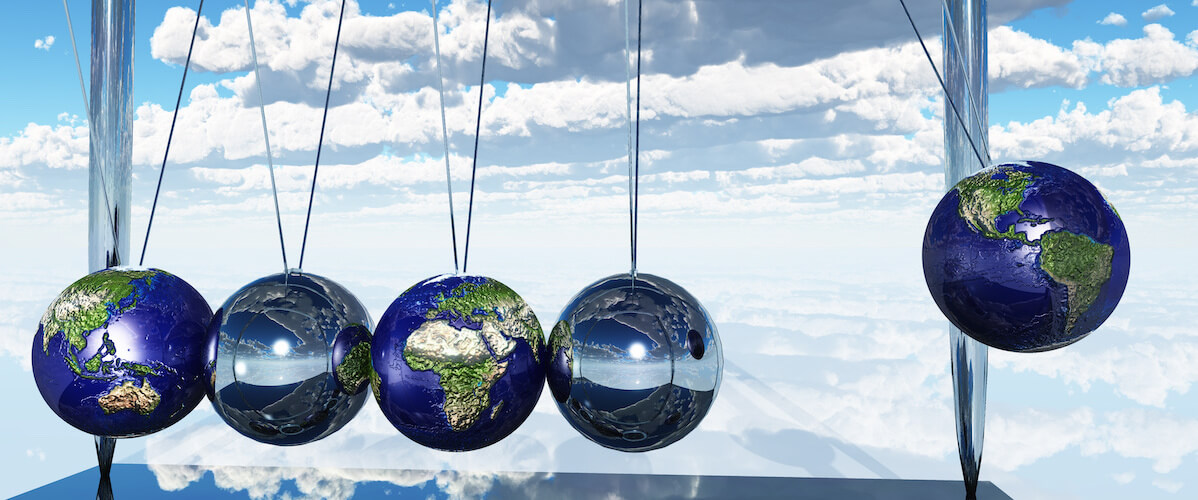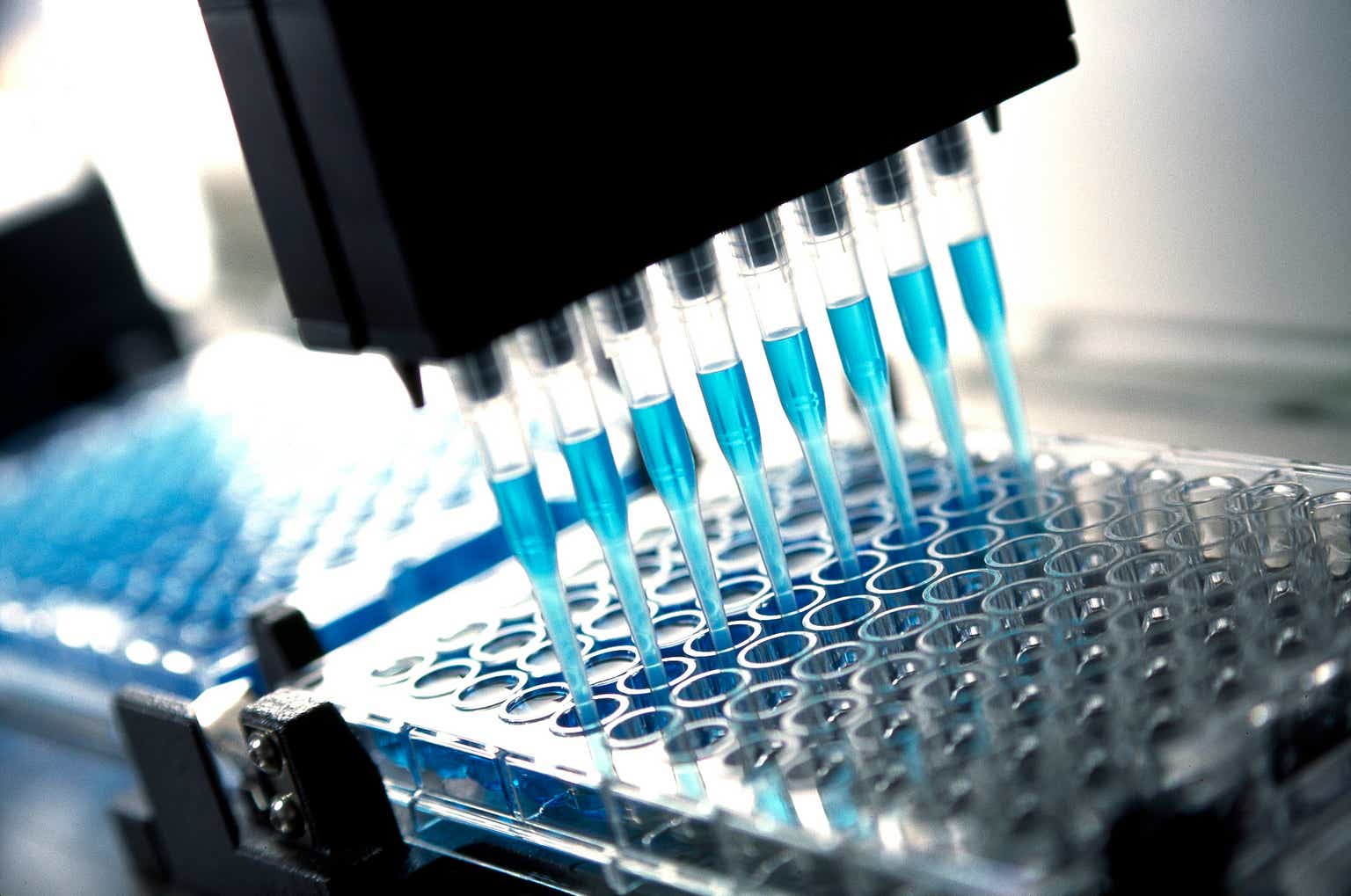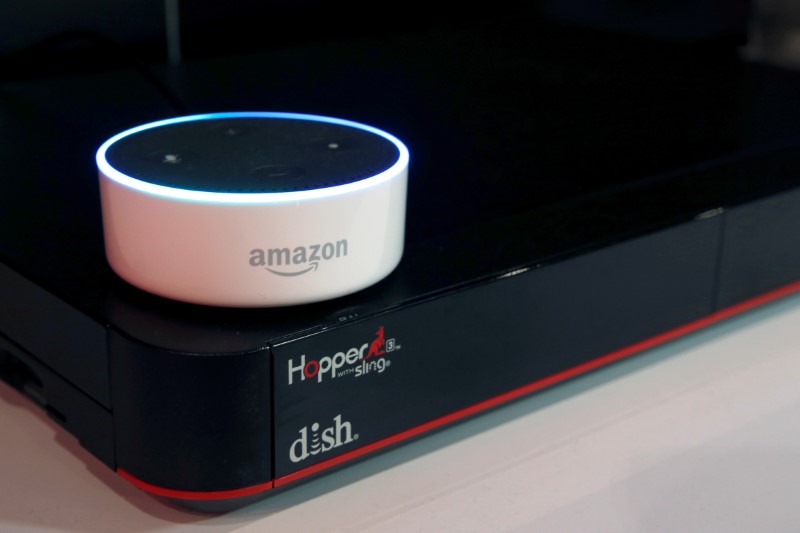Kawasaki Heavy Industries, Ltd. (KWHIY) Q3 2023 Earnings Call Transcript

Kawasaki Heavy Industries, Ltd. (OTCPK:KWHIY) Q3 2023 Results Conference Call February 8, 2024 11:30 PM ET
Company Participants
Katsuya Yamamoto – EVP, Executive Officer & IR
Katsuya Yamamoto
My name is Yamamoto. Thank you for your participation. Now I would like to present financial highlights. As announced today, at 11:30 a.m. on the Tokyo Stock Exchange and on the company’s website. In the third quarter financial year 2023, the company booked a 9-month cumulative business profit of JPY 700 million, a significant improvement from the previous quarter when the company posted a loss related to operational problems with the PW1100G-JM engine.
For the full year, business profit is expected to reach JPY 43 billion, an increase of JPY 3 billion from the previous announced forecast due to improved profitability in Aerospace Systems, Energy Solutions & Marine Engineering as well as a weaker yen despite worsening performance in Precision Machinery & Robot and Powersports & Engine.
Income before taxes and net income are unchanged from the previous forecast due to the expected loss on valuation of hedges by forward exchange contracts. Dividends will remain unchanged. The above is an overview. Please refer to Page 3 for a detailed explanation of the results.
Page 3. Once again, for the third quarter financial year 2023, orders received were JPY 1,290.1 billion. Revenue was JPY 1,229 billion. Business profit was JPY 0.7 billion. Loss before income taxes was JPY 17.9 billion and loss attributable to owners of the parent company was JPY 13.4 billion. Although each business has its own strengths and weaknesses. The overall business has generally remained in line with expectations since the previous announcement.
As you can see, the sales weighted average exchange rate for the third quarter was approximately JPY 6 lower than that of the same period last year. And the profit and loss impact, foreign currency volume was approximately $1.24 billion.
Page 4. The chart below shows the breakdown of orders, revenue and business profit for each segment. As shown in 1, Energy Solution & Marine Engineering reported an increase of JPY 7.3 billion year-on-year due to significant contributions from the ship and offshore structure and Energy Marine machinery businesses.
On the other hand, as mentioned in 2 above, the company reported a significant year-on-year decrease in profit in Powersports & Engine due to an increase in sales promotion expenses as booking estimated expenses related to the recall of off-road for wheelers in the U.S. in the third quarter. And in Precision Machinery & Robot mainly due to a stagnant inventory and a decrease in demand in the Chinese market.
As a result of the above, overall revenue increased by JPY 32.7 billion, from the same period last year to JPY 1,229 billion, while business profit (loss) decreased by JPY 80.1 billion to JPY 0.7 billion.
Page 5, see the chart for details. As noted in 1, the loss on the PW1100G engine was recorded as a decrease in revenue from sales resulting in a deterioration of the cost of revenue ratio. The main factors for 3 were cost reductions at the ship joint venture in China and improved profitability due to lower steel prices and a weaker yuan.
Page 6. Next, I will explain the stage profit below the business profit. As shown in 4, foreign exchange losses of JPY 10.8 billion were recorded in the third quarter. This was due to foreign exchange losses resulting from the loss on valuation of hedges of foreign exchange contracts. As a result, net loss attributable to owners of the parent amounted to JPY 13.4 billion, down JPY 65.9 billion from the same period last year.
Page 7. This section explains the factors that contribute to the increase or decrease in business profit and loss compared to the same period last year. The depreciation of the yen against the U.S. dollar resulted in a JPY 21.2 billion improvement. On the other hand, the change in the sales composition resulted in a JPY 25.6 billion decrease in profit mainly due to an increase in sales promotion expenses and estimated recall related expenses in the Powersports & Engine business as well as a decline in factory operations in the Precision Machinery & Robot business, mainly due to a drop in demand in the Chinese market.
Additionally, some bonus reserves, which were previously recorded in a lump sum at the end of the fiscal year will be leveled from the first quarter of this fiscal year and this change in accounting treatment has had the effect of reducing profits by approximately JPY 5 billion year-on-year.
In addition, a loss was recorded for the PW1100G engine, resulting in a business profit of JPY 0.7 billion for the third quarter, down JPY 80.1 billion, from the same period last year. Please refer to Page 8 for a detailed breakdown by segment.
Page 9. As indicated in 2, regarding the factors behind the change in assets in the third quarter, inventories increased in Aerospace Systems and Powersports & Engine in line with sales expansion. On the other hand, as indicated in 3, deferred tax assets increased as a result of the loss recorded for the PW1100G engine issue.
Page 10. With regard to the factors that caused changes in liabilities and net assets, as indicated in 4, interest-bearing debt has increased from the end of the previous period, but this is a normal business cycle. The net D/E ratio was 126%, slightly worse than in the same period last year, but this was due to a decrease in capital due to losses related to the PW1100G issue.
In addition to steadily improving profitability, we will continue our efforts to improve asset efficiency by promoting the collection of accounts receivable and reducing inventories with the aim of returning to our target level of 70% to 80% by the end of the fiscal year.
Page 11. As shown in 1, operating cash flow improved by JPY 15.1 billion from the same period last year mainly due to progress in collection of receivables in Powersports & Engine in the third quarter of the current fiscal year. While cash outflow in the third quarter of the previous fiscal year was due to an increase in advances in Aerospace Systems.
In terms of cash flow from investing activities, as shown in 2, expenditures for the acquisition of fixed assets increased mainly due to investments in connection with the startup of a plant in Mexico in the Powersports & Engine business, resulting in a JPY 27.8 billion outflow increase in overall cash flow from investing activities. As a result, free cash flow worsened by JPY 12.6 billion year-on-year.
Page 12. We have posted the cash flow trends for the past 10 years for your reference. Page 13. For the fiscal 2023 earnings outlook, as mentioned earlier, we expect a decrease in profits in the Precision Machinery & Robot and Powersports & Engine businesses from the previous forecast. However, due to improved profitability in the Aerospace and Energy Solution & Marine Engineering businesses and the depreciation of the yen, we expect business profit of JPY 43 billion, an increase of JPY 3 billion from the previous forecast.
Income before taxes and net income are unchanged from the previous forecast at JPY 21 billion and JPY 12 billion, respectively, due to the impact of valuation losses on the hedges associated with forward exchange contracts. We forecast higher sales and profits for the 3 months of the fourth quarter compared to the third quarter when sales and profits remain strong. And at this point, we believe there is a high probability that we will achieve our targets.
For your reference, please refer to the graph on Page 38, which shows the factors behind the JPY 35 billion change in business profit from the initial forecast of JPY 78 billion to the JPY 43 billion announced this time.
Page 14. The breakdown by segment is shown in the chart. Details are explained on the page for each segment. Page 15. The third quarter results for financial year 2023 are shown on the slide. Orders for the full year are expected to be JPY 590 billion, an increase of JPY 30 billion from the previous forecast, mainly due to an increase in orders from the Ministry of Defense.
Business profit was revised upward to a loss of JPY 17 billion, an improvement of JPY 7 billion from the previous forecast due to improved profitability of Aero Engines and yen being weaker than expected in the third quarter.
Page 16. Please refer to this page for the results of orders and revenue. The number of aircraft for Boeing and the number of engines sold for each of the airframe and engine business. Page 17. This page shows quarterly sales and profit trends.
Page 18. This page describes our understanding of the business environment and order trends in the segment are key measures to achieve our forecast and specific initiatives. Regarding the business environment, we understand that the PW1100G engine program is progressing as planned. In addition, we have listed priority measures and specific areas of emphasis for strengthening activities related to the Defense business for your reference.
Page 19. As shown in the slide for the third quarter results for financial year 2023, orders received were down significantly from the same period last year, but this was a reaction to the large orders received for the New York subway in the U.S. in the same period last year. Revenue increased by JPY 43.4 billion year-on-year due to an increase in the delivery of R211 cars for the U.S. market. Profits also increased by JPY 1.8 billion year-on-year mainly due to an increase in revenue despite the impact of lower domestic operations. There is no change in the forecast for fiscal year 2023 from the previous announcement.
Page 20. Please refer to this page for the respective orders and revenue in the domestic, Asian and North American markets. Page 21. This page shows quarterly revenue and profit trends for your reference. Page 22. There has been no change in the business environment and priority measures of the Rolling Stock business since the previous announcement. Page 23. The third quarter results for financial year 2023 are shown on the slide.
As for orders received, although there was an increase in orders for naval ship equipment for the Ministry of Defense, orders decreased due to the absence of orders for a waste treatment facility and LPG ammonia carriers received in the same period of the previous fiscal year. On the other hand, revenue rose due to the energy business and an increase in the construction volume of LPG ammonia carriers, and profits rose due to an increase in profit of equity method affiliates in addition to the increase in revenue.
The forecast for orders received has been raised by JPY 20 billion from the previous announcement, mainly due to an increase in orders for waste treatment facilities for the domestic market and the forecast for revenue has also been raised by JPY 10 billion based on progress in projects.
In terms of profit, we raised the previous forecast by JPY 4 billion due to improved profitability of the Energy business in addition to improved equity method gains in the shipbuilding business in China.
Page 24. Please refer to this page for a breakdown of orders, revenues and equity method gains and losses for the Energy, Plant & Marine Machinery business and ship and offshore businesses. Page 25. This page shows quarterly revenue and profit trends for your reference.
Page 26. This section describes the business environment and order trends in this segment. There are no major changes in the business environment or order trends. As for priority measures, we will continue to focus on providing products and services that contribute to the realization of a low-carbon and decarbonized society this fiscal year. As noted in the case study on the slide, we delivered a hybrid propulsion system for a bulk carrier in December. This is the first vessel of this type produced anywhere in the world.
In addition, we are steadily advancing efforts to realize a hydrogen society, including obtaining basic design approval from NK for the realization of hydrogen-fueled vessels. Page 27. The third quarter results for financial year 2023 are shown on the slide. Orders and revenue decreased from the same period of the previous year, mainly due to a decrease in orders for hydraulic equipment for the Chinese construction equipment market and industrial robots in general. Business profit also declined due to lower revenue and lower capacity utilization.
The forecast for both orders and revenue has been lowered by JPY 10 billion from the previous announcement due to the continued sluggish market and the forecast for business profit has also been lowered by JPY 4 billion from the previous announcement due to the decrease in revenue.
Page 28. This page shows orders, revenue and equity method gains or losses of the Precision Machinery & Robot segment. Please also refer to the following chart for a breakdown of hydraulic equipment revenue to the Chinese market and robot revenue by field.
Page 29. This page shows quarterly revenue and profit trends for your reference. Page 30. This page describes the business environment, order trends, priority measures and specific initiatives in this business segment. No major changes have been made to the content since the last meeting.
Page 31. Third quarter results for financial year 2023 are shown on the slide compared with the same period of the previous year revenue of motorcycles for Europe and 4-wheelers for North America increased, but revenue of motorcycles for Southeast Asia and general purpose engines for the U.S. decreased.
In addition to the decrease in revenue, business profit decreased due to an increase in sales, promotion expenses and fixed costs as well as the recording of estimated recall-related expenses related to 4-wheelers for the U.S. market in the third quarter. The forecast for revenue remains unchanged but business profit has been revised down JPY 3 billion from the previous forecast to JPY 47 billion due to recall-related expenses and other factors.
Page 32. This page shows revenue of motorcycles for developed countries, motorcycles for emerging markets, 4-wheelers and PWC and general-purpose gasoline engines. Please also refer to the table below for information on motorcycle sales by country.
Page 33. This page shows quarterly revenue and profit trends for your reference. Profit margin for the 3 months of the third quarter was 6.5%, a deterioration from the previous quarter. However, it should be noted that the profit margin would have been above 10% if recall-related expenses were excluded.
Page 34. We have included a new description of the current situation in the U.S. 4-wheeler market with regard to the business environment and priority measures for your reference. There are no major changes in other items from the previous report.
Page 35. Regarding shareholder returns, the dividend forecast remains unchanged from the previous announcement. In the next fiscal year, we will focus on returning to our previous growth path and achieving a significant increase in profit compared to the current fiscal year so that we can provide sufficient returns to shareholders.
Page 36. We are pleased to report 2 project topics, all are related to the hydrogen business, which we expect to be our future core business. This page describes the Dakar rally, in which members of the hydrogen small mobility, Engine Technology Association, HySE, including our company, Kawasaki Motors, Honda, Suzuki, Toyota and Yamaha participated with hydrogen fueled engine vehicles. The center of the slide shows the actual vehicle that participated in the race.
The engine is a hydrogen fueled version of the Ninja H2s 996cc supercharged engine manufactured by our company. The race was held in a harsh natural environment with high temperatures and long distances through desert and mountainous to rain, but the company finished in fourth place in the Mission 1000 category and attracted great attention from around the world. You can view the actual race video on YouTube by clicking the QR code on this slide.
We hope that this video will give you a sense of the possibilities and appeal of hydrogen engines. We will continue to contribute to the early realization of a carbon-neutral society from a global perspective through our world-leading hydrogen technology.
Page 37. In the 66th Ten Great New Products Awards announced last month, our 1.8-megawatt 100% hydrogen-fueled dry combustion gas turbine won the top prize, the Masuda Award.
The Ten Great New Product Awards sponsored by the Nikkan Kogyo Shimbun are given to products that have been developed and put to practical use in a given year and that contribute to the development of manufacturing and the strengthening of Japan’s international competitiveness.
The Masuda Award we won this time is a very prestigious award that has been given only 24 times in its 66-year history. The award was given in recognition of the world’s first commercialized gas turbine equipped with the combustor that can turn hydrogen exclusively in a dry process, thereby making a significant contribution to the reduction of CO2 emissions.
We will continue to contribute to the early realization of a decarbonized society by providing more hydrogen-fueled gas turbines to the market.
Page 38. From this page onward, reference information such as capital investment, depreciation and amortization, R&D expenses and number of employees at the end of the fiscal year are summarized. The number of orders received per quarter has also been added for your reference. This concludes my explanation.
Question-and-Answer Session
End of Q&A



